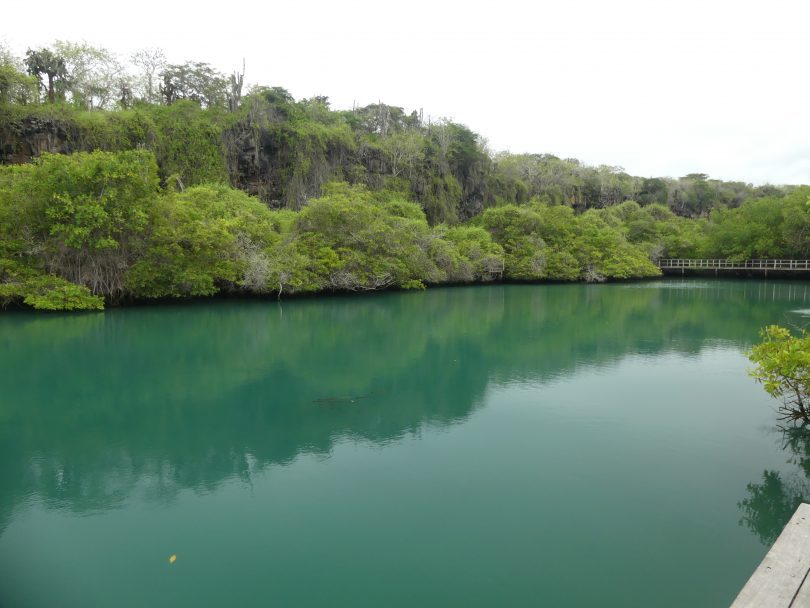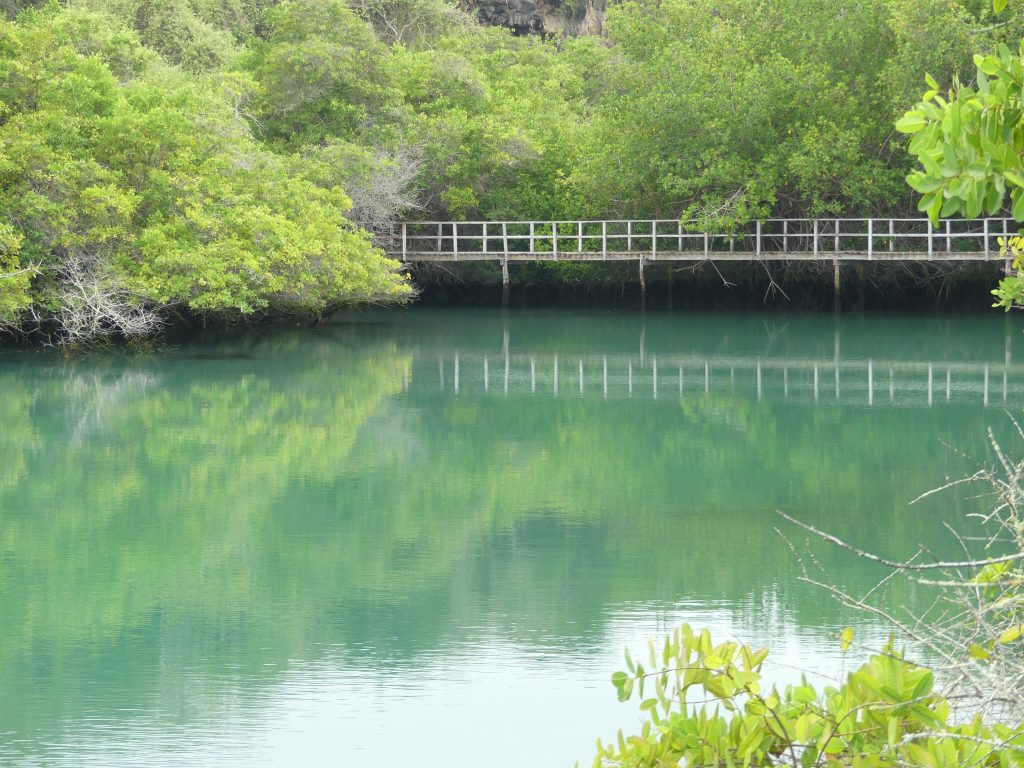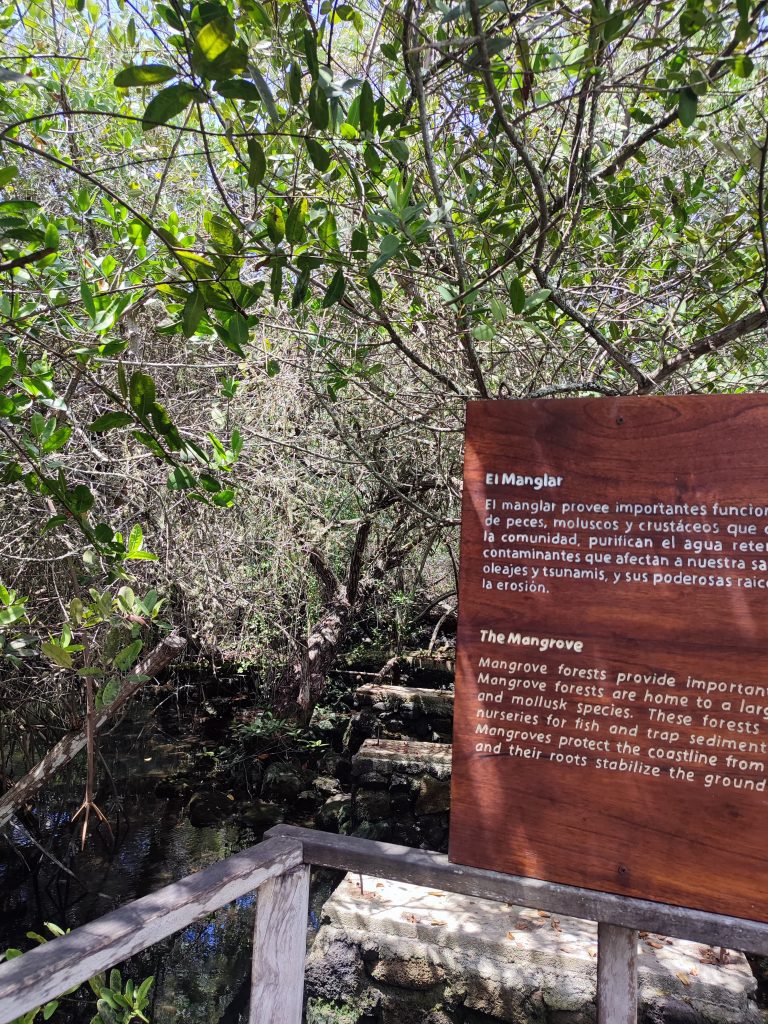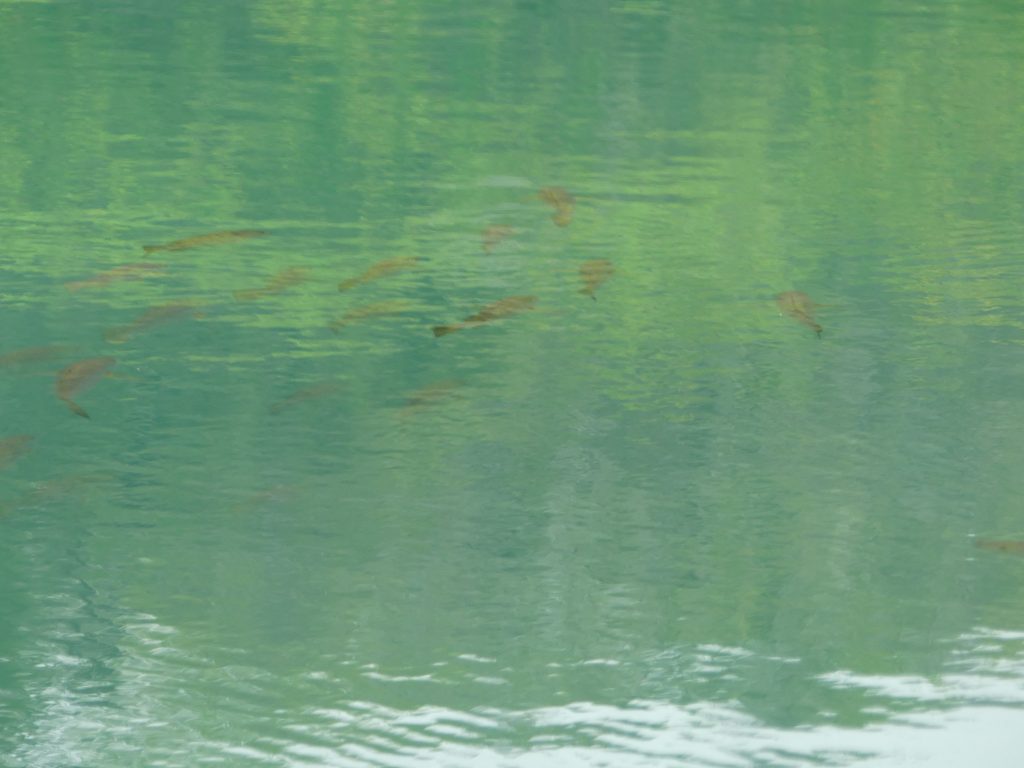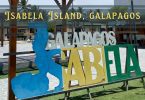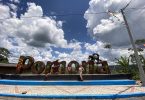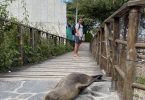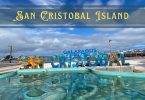Laguna de las Ninfas is a saltwater lagoon situated near Puerto Ayora, Santa Cruz, Galapagos Islands.
The lagoon is tidal and, being a meeting point of salt and fresh water is home to some unusual species.
The walkway that surrounds the lagoon winds through mangroves, with each tree kind labeled. There are a handful of walkouts where you may hunt for signs of life in the pristine waters or sit and rest in the peace.
It appears to have previously ringed the whole lagoon, but a section of the boardwalk is now destroyed, forcing you to turn around and return the way you came.
Walking around the lagoon shouldn’t take more than an hour, and perhaps less, depending on how many times you stop for photographs or a rest.
How to Get to Laguna de las Ninfas
Laguna de las Ninfas is conveniently accessible by foot because it is situated just outside of Santa Cruz’s Puerto Ayora. Simply walk straight and up the road beyond the neighborhood grocery. Take the first left into Moises Brito, then the second left into the lagoon’s entrance. It will simply take a few minutes of straight walking to reach the location.
A Walk to the Nymphs Lagoon
It was a slow day for us. Since it is our free day, we decided to rest on the first half of the day and to visit Laguna de las Ninfas in the afternoon.
We left our hostel in Puerto Ayora around 3:00 p.m., carrying our day backpack with some snacks.
We know where we’re headed, but as we make our way down towards the sea, we lose track of which street we’re on and which one we’re searching for.
Fortunately, Puerto Ayora is a small town. We round a corner into a major-ish street, and there ahead us is the Laguna de las Ninfas entrance.
Our first glimpse of the lagoon is breathtaking as we get past the signboard and onto the promenade. There is a boardwalk around the lagoon. We’re walking on land at times and over water at others.
Frigates float well over our heads in the afternoon thermals. The lagoon’s far side backs up to towering rock cliffs that quickly conjure up images of pirates mounting those cliff sides, cutlasses clasped between their teeth.
Mangrove trees grow on both sides of the boardwalk, anchoring the lagoon’s shores and offering numerous hiding places for fish and birds.
We noticed many little pools broken off from the main lagoon towards the foot of the cliffs. We can see all the way to the bottom because the water is so clear. Small fish dart among the rocks and the stones appear to be suitable for climbing.
The hue of the water changes from beautiful turquoise green to a deep mesmerizing blue as we continue to explore the lagoon.
It was nearly dinner time when we decided to head back to the hostel. We wandered around a bit in the Malecon near the docks and watched how the locals spend their day.
Bottom Line
Overall, exploring the nymph’s lake is a soothing experience. We recommend visiting the lagoon if you have a few hours to spare and wish to enjoy a leisurely stroll. It’s also a nice location to stop for lunch.
It is situated between the Charles Darwin Research Station and Tortuga Bay. Combine all three for a memorable day in the Galapagos Islands!
If you only have a limited amount of time in Santa Cruz Island, you may consider spending it elsewhere.
We didn’t observe much life here, but there were some large fish and interesting birds. In my personal opinion, there are better things to do while in the Galapagos. Consider this location if you enjoy bird watching. Do not forget to put on your sunscreen, and the insect repellant too when you visit Laguna de las Ninfas.

